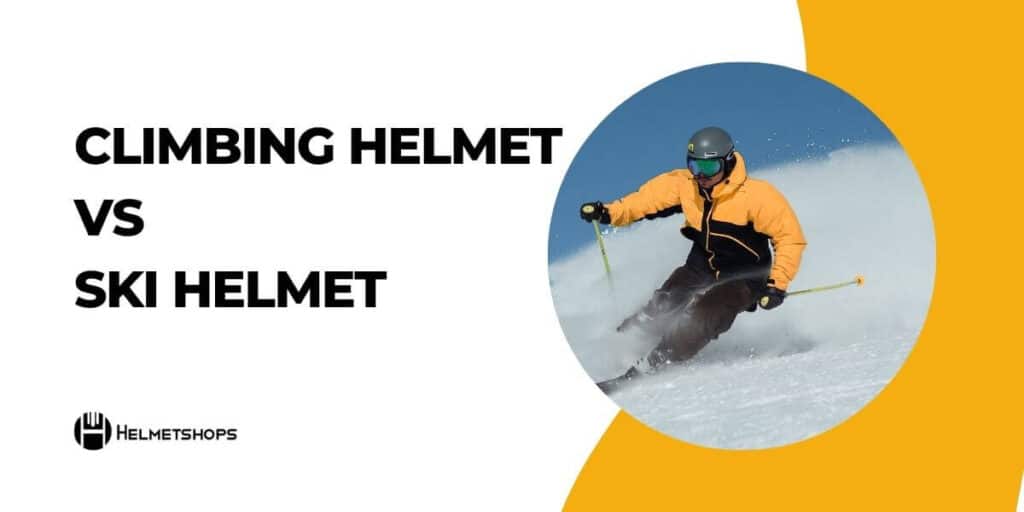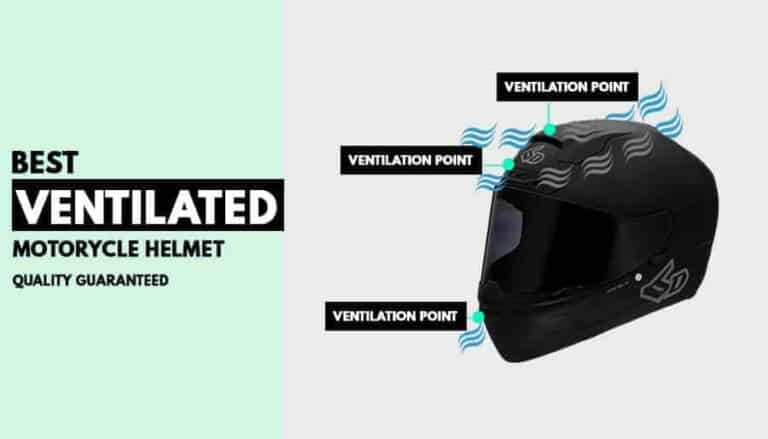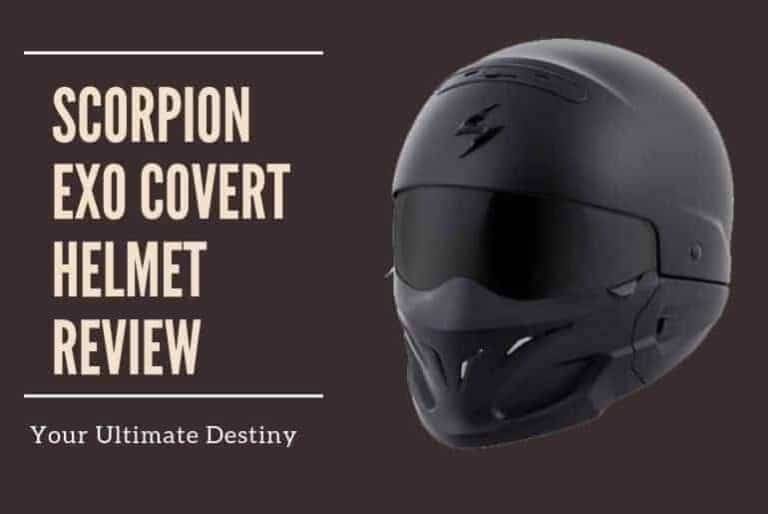Disclosure: As an Amazon Associate We earn from qualifying purchases.
Climbing helmets are designed to protect against rock and falling debris, while ski helmets focus on impact protection against trees, other skiers, and hard snow. Choosing the right type of helmet for outdoor adventures is essential for your safety.
While both helmets may look similar, their design and features are specifically tailored to the activities they are intended for. Climbing helmets typically have wider ventilation and provide protection against rock and debris falls. On the other hand, ski helmets are designed to withstand multiple impacts, often with trees and other skiers.
Additionally, they are equipped with ear pads and insulation to protect against cold temperatures. As a professional adventure enthusiast, you must invest in the appropriate safety gear for your specific activity to avoid potential harm.

Key Differences Between Climbing Helmets And Ski Helmets
Climbing Helmet Vs Ski Helmet
Both climbing and skiing can be thrilling sports, but they pose different risks. One of the key safety measures for any sport is wearing an appropriate helmet. While it’s possible to use the same helmet for both climbing and skiing, it’s essential to understand the differences in construction, design, and features.
Climbing helmets and ski helmets differ in terms of protection and suitability for different activities. It is crucial to select the appropriate helmet for your specific activity.
Explain The Construction, Design, And Features Of Climbing Helmets And Ski Helmets.
Climbing Helmet
- Designed to provide protection from falling objects, bumps, and falls during rock and ice climbing.
- Made of hard plastic (abs or polycarbonate) shell on the exterior with a foam liner on the inside.
- The foam liner is designed to absorb the impact in the event of a fall or hit.
- Has an adjustable chin strap, a headlamp attachment system, and good ventilation.
- Usually helmets have a relatively smooth surface for snag-free movement.
Ski Helmet
- Designed to provide protection in the case of a high-speed impact during skiing.
- Made of hard plastic (abs or polycarbonate) shell on exterior with expanded polystyrene (EPS) foam liner on the inside.
- The EPS foam liner is designed to absorb the impact in the event of a crash.
- Has an adjustable chin strap and a goggle strap holder.
- Usually has ear pads and has less ventilation compared to climbing helmets.
Mention The Areas Where The Two Helmets Differ In Construction And Function.
Construction
- Climbing helmets tend to have a smooth surface to ensure they don’t snag on anything during the climb. Ski helmets have a more aerodynamic design with ear pads and better insulation for cold weather.
- Eps foam liner is exclusive to ski helmets, while climbing helmets have a more robust foam liner for absorbing the impact of the falls and hits.
Function
- Ski helmets provide more protection against high-speed impacts that result from skiing or snowboarding accidents. Climbing helmets are designed to protect the user from falling rocks, ice, and other objects when climbing.
Highlight How These Differences Offer Varying Degrees Of Protection To The Wearer.
The different construction and function of climbing helmets and ski helmets lead to varied degrees of protection. Ski helmets offer better protection against high-speed falls that are typical occurrences on ski slopes. Their hard exterior shell and EPS foam liner work together to protect the wearer’s head in case of a high-velocity impact.
Climbing helmets, on the other hand, are designed to protect the head against falling objects like ice or debris and provide adequate impact resistance. They tend to have a more robust construction and focus on comfort and breathability. However, some climbing helmets’ chin straps may not be as secure, which may result in the helmet coming off during falls.
The choice of helmet depends on the activity, comfort, and safety measures. It’s important to choose a helmet that suits your activity and provides enough protection.
Protection Offered By Climbing Helmets
Discuss The Specific Features Of Climbing Helmets That Make Them An Excellent Choice For Climbers.
Climbing helmets are designed explicitly for the unique needs of rock climbers and mountaineers, and offer superior head protection for those participating in these activities. Some specific features of climbing helmets that make them an excellent choice for climbers include:
- Lightweight and durable: Climbing helmets are crafted from lightweight, long-lasting materials like polycarbonate or abs plastic for optimal protection during climbing expeditions.
- Extended side coverage: Climbing helmets come with extended coverage to protect not only the head’s top and back but also the side of the head.
- Ventilation: Climbing helmets have a decent ventilation system that allows for air flow and prevents the head from overheating and sweating.
- Secure fit: Climbing helmets offer a customizable fit due to the inclusion of adjustable chin straps, headbands, and ratchet systems that help hold the helmet tight but comfortable on the climber’s head.
Mention The Materials Used In Making Climbing Helmets And How They Contribute To Their Ability To Protect The Head From Injury.
Climbing helmets are designed with specific materials to reduce the effects of impact, in case of falls or debris. These materials help climbing helmets’ abilities to protect the wearer’s head, which includes:
- Polycarbonate: This material provides a durable and robust outer layer against impact, making it a good choice for the outer shell of a helmet.
- Eps foam: Crushable and energy-absorbent foam material used in the helmet’s inner layer that helps dissipate the force from any impact.
- Abs plastic: This material is commonly used in helmet construction due to its combination of high impact resistance, toughness, and lightness.
Provide Examples Of Situations Where A Climbing Helmet Would Offer Superior Protection To A Skier’S Helmet.
There are specific situations where a climbing helmet offers better protection than a skier’s helmet, and these include:
- Rock climbing: Rock climbers are vulnerable to falling rocks, loose rocks, and high altitude falls. Climbing helmets come with extended head coverage, which offers protection from falling debris, making them a better choice for rock climbing activities.
- Mountaineering: Mountaineering activities are risky, and falls of any kind can lead to severe head injuries. Climbing helmets’ robust exterior and inner foam layers offer superior head protection during such falls.
- Ice climbing: Ice climbers can fall onto sharp ice or rocks that can cause significant head injuries. A climbing helmet’s tough outer layer and crushable inner foam layer reduce the impact of the fall and provide better protection than a skier’s helmet.
Climbing helmets are purpose-built for specific climbing activities, and they offer excellent protection that cannot be matched by general-purpose helmets such as ski helmets. They are lightweight, durable, have extended coverage, good ventilation, and a secure fit for maximum protection.
Climbing helmets commonly utilize materials such as polycarbonate, EPS foam, and ABS plastic, which greatly enhance their capacity to safeguard the head against injuries. Climbing helmets offer superior protection to skier’s helmets in certain situations such as rock climbing, mountaineering, and ice climbing.
Protection Offered By Ski Helmets
In the realm of winter sports such as skiing and snowboarding, wearing a helmet should not only be contemplated, but rather acknowledged as an indispensable necessity. The impact of a fall can be fatal, and wearing a helmet can save a person from a serious head injury.
However, not all helmets are created equal.
Explain Why Ski Helmets Are Suitable For Winter Sports Such As Skiing And Snowboarding.
Ski helmets are designed by considering the specific requirements of skiing and snowboarding. These helmets are designed to provide maximum protection against head injuries that could occur due to unforeseen falls while engaging in these sports. Here’s why ski helmets are the perfect safety gear for winter sports:
- Ski helmets are capable of resisting impact from slow and fast-moving objects that may come in contact during skiing and snowboarding.
- They are designed in a way that covers not only the head but also the ears, encouraging warmth retention during extreme conditions.
- The material used in constructing ski helmets is perfect for absorbing shocks that could result from falls.
- The strap and adjustment systems ensure proper fitting and comfort through all activities.
Highlight The Key Features That Make Ski Helmets Effective In Protecting The Head During Winter Activities.
Ski helmets are built to protect against severe head injuries. They are equipped with features that make them highly effective in doing so. Here are some key elements that make ski helmets the best defense gear for winter activities:
- Outer shell: Ski helmets have an outer hard shell designed to bear the impact of any unforeseen falls and collisions. The outer shell is made of hard plastic and is capable of absorbing high impact shocks.
- Inner lining: The inner lining of ski helmets is made of foam designed for shock absorption during an impact and to provide added comfort and warmth during cold weather.
- Ventilation system: Ski helmets have well-designed ventilation systems that allow the smooth flow of air to prevent overheating and fogging of the goggles.
- Ear protection: Ski helmets are equipped with ear flaps that offer extra head protection, while also playing a crucial role in reducing distracting wind noise that could impede concentration.
- Goggle compatibility: Ski helmets are designed to accommodate goggles easily, keeping the eyes secure from the bright sunlight and also keeping the hair and sweat away from the face.
Provide Examples Of Situations Where A Ski Helmet Would Offer Superior Protection To A Climber’S Helmet.
While ski helmets and climber’s helmets may look similar, they are not the same. Ski helmets are better than climber’s helmets for winter activities like skiing and snowboarding. Here’s why:
- Ski helmets protect against high-impact falls from skiing, while climber’s helmets protect from low-impact hazards like rockfall.
- Climbing helmets can be heavy and uncomfortable for skiing or snowboarding, but ski helmets are lightweight and comfortable for wearing all day.
- Ski helmets are designed with ventilation systems that effectively prevent the discomfort of overheating. Climber’s helmets usually lack this feature, making them hot and uncomfortable.
- Ski helmets offer superior coverage that extends down to the ears, making them more effective face protection gear than climber’s helmets for winter sports.
Ski helmets are designed for different purposes than climber’s helmets. They are more effective in protecting people who do winter sports like skiing and snowboarding. By considering the specific requirements of these activities, ski helmets offer a superior level of protection compared to climber’s helmets.
Factors To Consider When Choosing A Helmet
Choosing the right helmet is very important, especially for activities such as climbing and skiing. While both helmets have a similar look and purpose, each is designed to fulfil specific safety needs. Here are the different aspects that individuals should consider when choosing between a climbing and ski helmet:
The Activities Each Helmet Is Suitable For
- Climbing helmets: These types of helmets are suitable for activities such as mountaineering, rock climbing and ice climbing where there is a risk of falling rocks, ice or debris.
- Ski helmets: These helmets are made mainly for downhill skiing and snowboarding. They are built to protect the head from impacts related to skiing accidents.
The Safety Standards Associated With Each Helmet
- Climbing helmets: These helmets are made to meet safety standards set by organizations like european committee for standardization (CEN) and the union Internationale des associations d’alpinisme (uiaa).
- Ski helmets: These helmets need to pass safety regulations set by standard-setting organizations like astm international or CEN.
Recommendations Based On The Activity And The Level Of Risk Associated With It
- For climbing-related activities, it’s best to opt for a climbing helmet because it’s designed to absorb sharp impacts along with providing good peripheral vision.
- For skiing or snowboarding, it’s important to wear a ski helmet. These helmets are specifically designed to handle high-speed impacts and protect your head during a fall.
- In activities that include both climbing and skiing, it’s best to choose a hybrid helmet – one that is suitable for both activities.
Helmets prioritize safety above all else. Choose a helmet that meets safety standards and is suitable for the activity you’re doing. By keeping these factors in mind, you’ll ensure that you are fully protected on your adventure and your helmet is worth your investment.
Frequently Asked Questions For Climbing Helmet Vs Ski Helmet
What Is The Difference Between A Climbing Helmet And A Ski Helmet?
A climbing helmet protects against falling rocks, while a ski helmet protects against head injuries from falling or crashing on snow.
Can You Use A Climbing Helmet For Skiing And Vice Versa?
It is not recommended to use a climbing helmet for skiing as it does not provide the same level of protection as a ski helmet. Similarly, using a ski helmet for climbing is not recommended as it does not protect against falling rocks.
Is A Climbing Helmet More Durable Than A Ski Helmet?
Climbing helmets are designed to be more durable and can withstand impacts from falling rocks and debris. Ski helmets are designed to be lighter and are designed to reduce the impact of falls on snow.
Are Climbing Helmets More Expensive Than Ski Helmets?
Climbing helmets are pricier than ski helmets because they are made with more expensive materials and have extra features like stronger build and improved ventilation.
Can You Replace A Helmet That Has Been Damaged In A Fall?
Any helmet that has been damaged in a fall should be replaced immediately as it will no longer provide adequate protection. It is important to always replace helmets following any impact or damage.
Conclusion
It is clear that both climbing and ski helmets are designed to protect people from serious head injuries. However, there are important differences between these two types of helmets. Climbing helmets are designed to protect against falling rocks or other debris while skiing helmets are made to absorb impacts from falls.
While the two types of helmets may look similar, they are constructed differently and have unique features that make them suitable for different activities. Ultimately, the type of helmet you choose will depend on the activity you plan to participate in, your personal preferences and your budget.
It is important to always ensure that you buy high quality, properly-fitting helmets that meet safety standards. Safety should always come first when choosing a helmet, regardless of the type. Wearing a helmet can potentially save your life.






